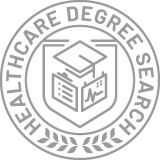Bachelor’s Degrees in Medicinal and Pharmaceutical Chemistry
Featured schools near , edit
Education Levels of Medicinal and Pharmaceutical Chemistry Majors
In 2020-2021, 17 earned their bachelor's degree in medicinal and pharmaceutical chemistry. This makes it the 112th most popular bachelor's degree program in the country.
The following table shows the number of diplomas awarded in medicinal and pharmaceutical chemistry at each degree level.
| Education Level | Number of Grads |
|---|---|
| Doctor’s Degree | 81 |
| Master’s Degree | 61 |
| Bachelor’s Degree | 17 |
| Graduate Certificate | 2 |
Earnings of Medicinal and Pharmaceutical Chemistry Majors With Bachelor’s Degrees
At this time, we do not have the data to estimate the median earnings for this class of people.
Student Debt
We do not have the data to estimate the median debt for this class of people.
Student Diversity
More men than women pursue bachelor's degrees in medicinal and pharmaceutical chemistry. About 52.9% of graduates in this field are male.
| Gender | Number of Grads |
|---|---|
| Men | 9 |
| Women | 8 |

The racial-ethnic distribution of medicinal and pharmaceutical chemistry bachelor’s degree students is as follows:
| Race/Ethnicity | Number of Grads |
|---|---|
| Asian | 2 |
| Black or African American | 1 |
| Hispanic or Latino | 1 |
| White | 10 |
| International Students | 1 |
| Other Races/Ethnicities | 2 |

Most Popular Medicinal and Pharmaceutical Chemistry Programs for Bachelor’s Degrees
There are 11 colleges that offer a bachelor’s degree in medicinal and pharmaceutical chemistry. Learn more about the most popular 11 below:
Massachusetts College of Pharmacy and Health Sciences tops the list of the most popular school in the U.S. for medicinal and pharmaceutical chemistry majors who are seeking their bachelor's degree. Each year, around 7,500 students seeking various degrees attend the university. The average in-state tuition for full-time undergraduates is $34,700 per year, while in-state graduate students, on average, pay $22,950 per year. The medicinal and pharmaceutical chemistry program at Massachusetts College of Pharmacy and Health Sciences awarded 4 bachelor's degrees during the 2020-2021 school year. Of these students, 25% were women and 50% were members of underrepresented racial-ethnic groups.
The most popular school in the United States for medicinal and pharmaceutical chemistry students seekinga bachelor's degree is University of Dayton. Roughly 11,600 attend the school each year. The average in-state tuition for full-time undergraduates is $44,890 per year, while in-state graduate students, on average, pay $18,090 per year. During the 2020-2021 academic year, 4 people received their bachelor's degree in medicinal and pharmaceutical chemistry from UDayton.
Saint Louis University is the 3rd most popular school in the nation for students seeking a bachelor's degree in medicinal and pharmaceutical chemistry. Each year, around 12,200 students seeking various degrees attend the university. The average in-state tuition for full-time undergraduates is $48,100 per year, while in-state graduate students, on average, pay $21,960 per year. For the 2020-2021 academic year, 3 bachelor's degrees were handed out to medicinal and pharmaceutical chemistry majors at SLU. Of these students, 67% were women and 33% were members of underrepresented racial-ethnic groups.
Cleveland State University is the 4th most popular school in the nation for students seeking a bachelor's degree in medicinal and pharmaceutical chemistry. Each year, around 15,200 students seeking various degrees attend the university. The average in-state tuition for full-time undergraduates is $11,610 per year, while in-state graduate students, on average, pay $10,419 per year. During the 2020-2021 academic year, 2 people received their bachelor's degree in medicinal and pharmaceutical chemistry from Cleveland State University.
University of the Sciences is the 4th most popular school in the nation for students seeking a bachelor's degree in medicinal and pharmaceutical chemistry. The average in-state tuition for full-time undergraduates is $26,983 per year, while in-state graduate students, on average, pay $30,168 per year. The medicinal and pharmaceutical chemistry program at University of the Sciences awarded 2 bachelor's degrees during the 2020-2021 school year.
Michigan Technological University comes in at #4 on our list of the most popular colleges offering bachelor's degrees in medicinal and pharmaceutical chemistry. Each year, around 6,800 students seeking various degrees attend the university. The average in-state tuition for full-time undergraduates is $17,903 per year, while in-state graduate students, on average, pay $22,725 per year. During the 2020-2021 academic year, 2 people received their bachelor's degree in medicinal and pharmaceutical chemistry from Michigan Tech.
Explore Major by State
Alabama
Arkansas
Connecticut
Florida
Idaho
Iowa
Louisiana
Massachusetts
Mississippi
Nebraska
New Jersey
North Carolina
Oklahoma
Rhode Island
Tennessee
Vermont
West Virginia
Related Majors
Below are some popular majors that are similar to medicinal and pharmaceutical chemistry that offer bachelor’s degrees.
| Major | Annual Degrees Awarded |
|---|---|
| Pharmaceutical Sciences | 1,633 |
| Pharmacy | 885 |
| Other Pharmaceutical Sciences | 446 |
| Pharmaceutics & Drug Design | 195 |
| Pharmaceutical Marketing & Management | 67 |
References
*The racial-ethnic minority student count is calculated by taking the total number of students and subtracting white students, international students, and students whose race/ethnicity was unknown. This number is then divided by the total number of students at the school to obtain the percentage of racial-ethnic minorities.
- College Factual
- National Center for Education Statistics
- O*NET Online
- Bureau of Labor Statistics
- Image Credit: By {} under License
More about our data sources and methodologies.
Featured Schools
 Request Info
Request Info
|
Southern New Hampshire University You have goals. Southern New Hampshire University can help you get there. Whether you need a bachelor's degree to get into a career or want a master's degree to move up in your current career, SNHU has an online program for you. Find your degree from over 200 online programs. Learn More > |






